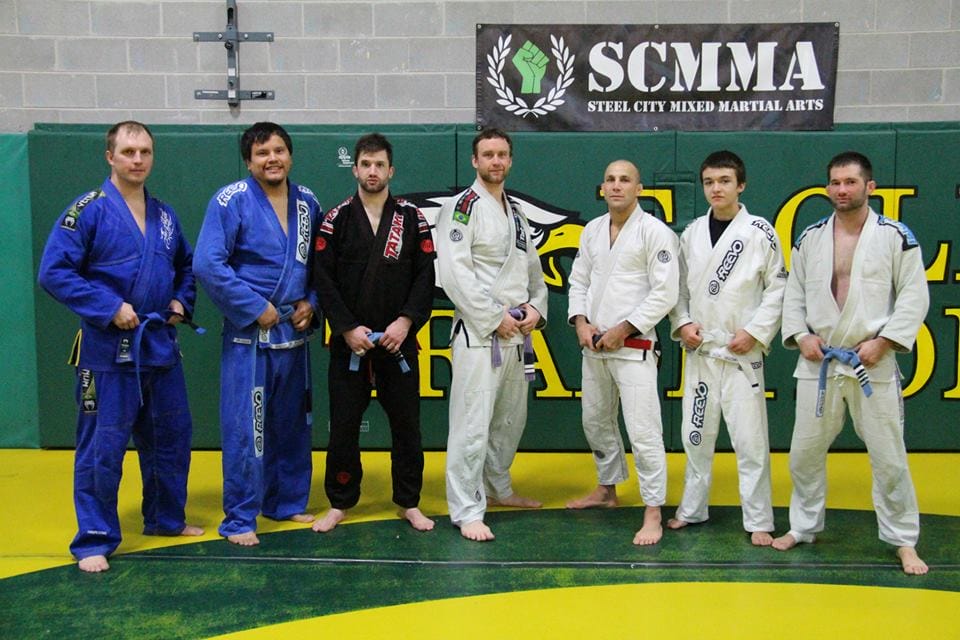Bench Press 2-2-2-2-2-2-2-2-2, resting 60 seconds between attempts
Then:
10:00 AMRAP
With a 40#/35# dumbbell
5 one-arm snatches
5 one-arm overhead lunges
5 one-arm Russian squats (bell hanging at side in suitcase carry fashion)
100-meter run
Switch arms
In case you missed it this weekend, SCMMA had a great Jiu-Jitsu tournament and seminar! Congrats to Rosie and Buzzwind for attaining their blue belts, and to Mitch, Brent and Mark for putting on a great event!
Why The Bench Press?
Originally, Olympic weightlifting included three movements: the clean and jerk, the snatch, and the press. It was a strict press, but the rules allowed for as much back arch as the lifter could muster. Some Olympians went so far as to assume a ‘bridge position’ – head and heels on the floor, bar on their chest, essentially creating a bench from their bodies. Bill Starr has a good article on the typical back arch in an ‘Olympic press’ here.
This was dangerous, of course, but the pursuit of victory in elite sport means balancing the risks and benefits on a different fulcrum than what we use.
As the Olympic press became more horizontal, practicing the lift in a prone (lying) position became more advantageous. When the press was banned in the 1970s, weightlifters decreased the use of the bench press in training, but didn’t abandon it altogether: it was still useful for training the lockout of the jerk. It’s also mentally easier to hold 400lbs in your hands for the tenth time than for the first time; if a lifter can bench press 400lbs first, it may help get over the hump of jerking 400lbs later. This was a mental conditioning strategy used for awhile in Bulgaria.
As inter-gym competitions using accessory lifts became formalized (the squat, deadlift and bench press) the need for rules became apparent. Gradually, these rules coalesced into the more modern sport of Powerlifting.
Some athletes combined gymnastics and weightlifting in to the new pursuit of ‘physical culture’ – not a lifestyle, but an aesthetic/social pursuit that became ‘bodybuilding’ much later – and kept the bench press because, well, pecs.
Now the backbone of the modern program (Monday is internationally recognized as Chest and Triceps Day in the outdated Globo Gym,) the bench press is oft-maligned by functional athletes. How often, they ask, do you need to lift something with your back braced? But the value as an accessory lift is still higher than most. It’s simple to learn (many perform it incorrectly anyway,) has gratifying aesthetic benefits, and puts heavy barbells into the hands of people quickly. It’s also fun to see numbers rise, and provides a great ‘crossover point’ for conversation with non-CrossFitters.
Though I wasn’t an elite powerlifter, I can still bench as much raw as I did back then…and we only bench press once or twice per month, preferring to go overhead or do gymnastics movements the rest of the time.
Skip to content
Fill out the form below to get started
Take the first step towards getting the results that you want!

